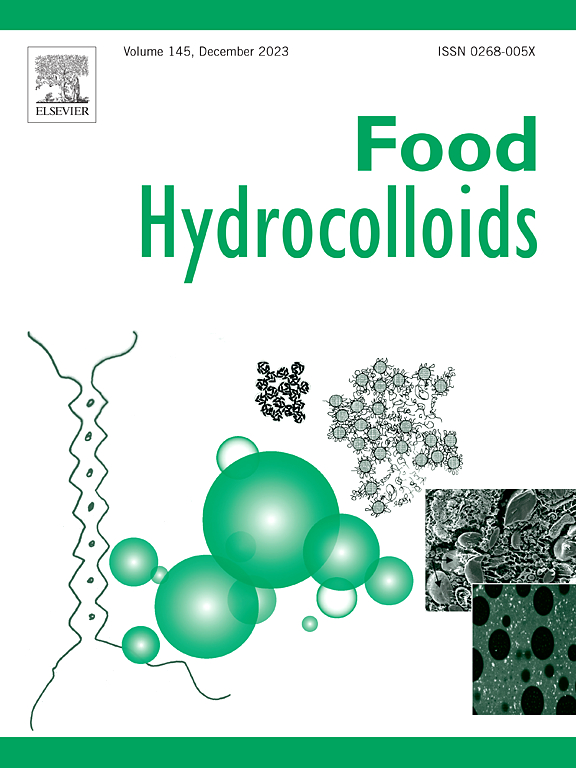Development of gelatin/camellia oil oleogels as fat substitutes via a novel strategy: Covalent crosslinking of electrospun nanofiber
IF 11
1区 农林科学
Q1 CHEMISTRY, APPLIED
引用次数: 0
Abstract
An innovative and facile method was developed to fabricate oleogels from biopolymers. Gelatin nanofibers were prepared by electrospinning and crosslinked by genipin, and through the one-step homogenization of nanofiber membranes and camellia oil, electrospun fiber-based oleogels (EFO) were obtained. Genipin crosslinking enhanced the fiber diameter from 138.66 to 311.92 nm, providing different nanofiber modules for oleogel preparation. The network structure in EFO was confirmed by microstructure examination, and fiber content and crosslinking influenced the protein conformation and thermal stabilities. Adding nanofiber in EFO effectively increased the apparent viscosity and oil binding capacity (up to 79.32%) while crosslinking decreased the values to some extent. Nevertheless, the highly crosslinked samples with a high fiber content had the best thixotropic recovery (83.24%). Crosslinking also contributed to a steadier free fatty acid release performances with a final release amount of 50.31%. Furthermore, EFO was successfully utilized to replace commercial solid fats in making cookies with considerable performances. Results indicated that EFO could be conveniently prepared by the new method, and samples were promising as fat substitutes in healthy diets. In addition, due to the simplicity and universality of this method, more biopolymers and modification strategies could be accessible in electrospun nanofiber dispersing oleogel systems.

求助全文
约1分钟内获得全文
求助全文
来源期刊

Food Hydrocolloids
工程技术-食品科技
CiteScore
19.90
自引率
14.00%
发文量
871
审稿时长
37 days
期刊介绍:
Food Hydrocolloids publishes original and innovative research focused on the characterization, functional properties, and applications of hydrocolloid materials used in food products. These hydrocolloids, defined as polysaccharides and proteins of commercial importance, are added to control aspects such as texture, stability, rheology, and sensory properties. The research's primary emphasis should be on the hydrocolloids themselves, with thorough descriptions of their source, nature, and physicochemical characteristics. Manuscripts are expected to clearly outline specific aims and objectives, include a fundamental discussion of research findings at the molecular level, and address the significance of the results. Studies on hydrocolloids in complex formulations should concentrate on their overall properties and mechanisms of action, while simple formulation development studies may not be considered for publication.
The main areas of interest are:
-Chemical and physicochemical characterisation
Thermal properties including glass transitions and conformational changes-
Rheological properties including viscosity, viscoelastic properties and gelation behaviour-
The influence on organoleptic properties-
Interfacial properties including stabilisation of dispersions, emulsions and foams-
Film forming properties with application to edible films and active packaging-
Encapsulation and controlled release of active compounds-
The influence on health including their role as dietary fibre-
Manipulation of hydrocolloid structure and functionality through chemical, biochemical and physical processes-
New hydrocolloids and hydrocolloid sources of commercial potential.
The Journal also publishes Review articles that provide an overview of the latest developments in topics of specific interest to researchers in this field of activity.
 求助内容:
求助内容: 应助结果提醒方式:
应助结果提醒方式:


